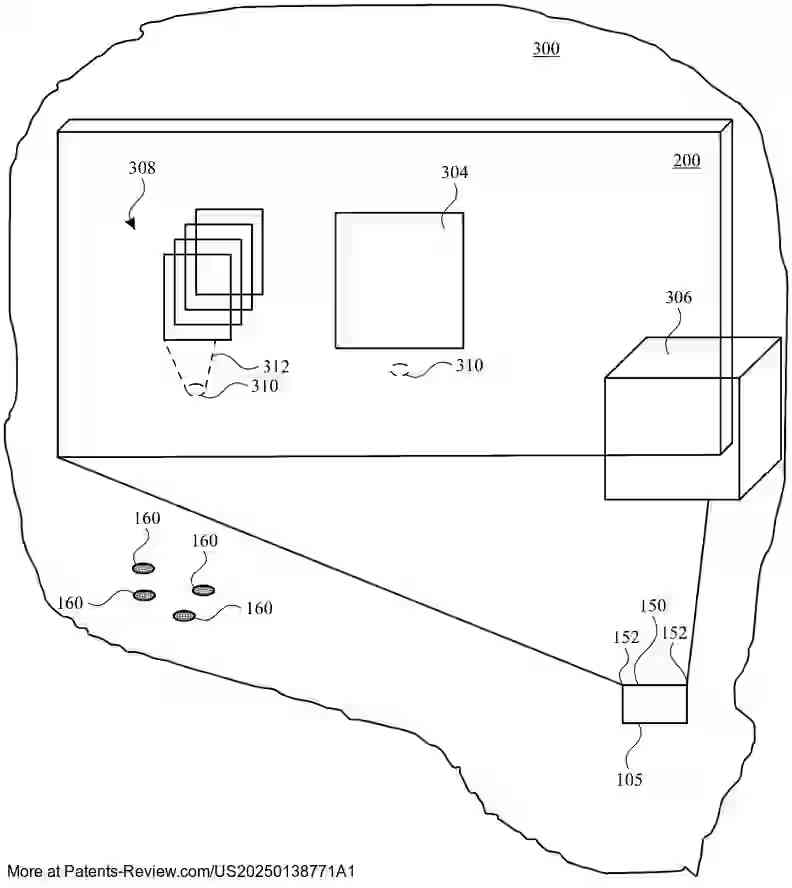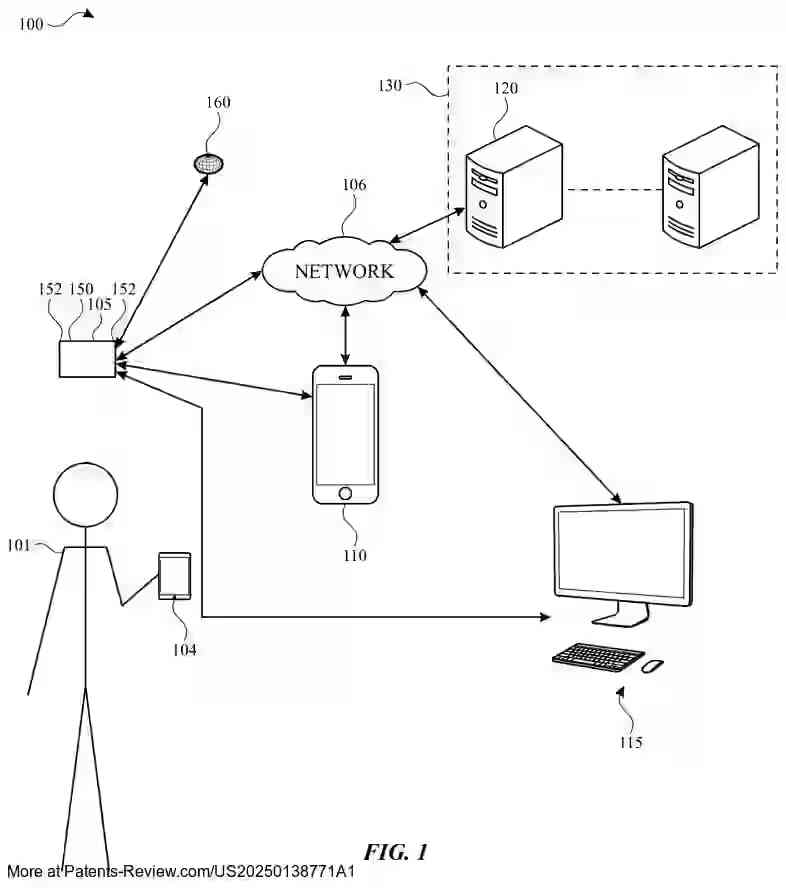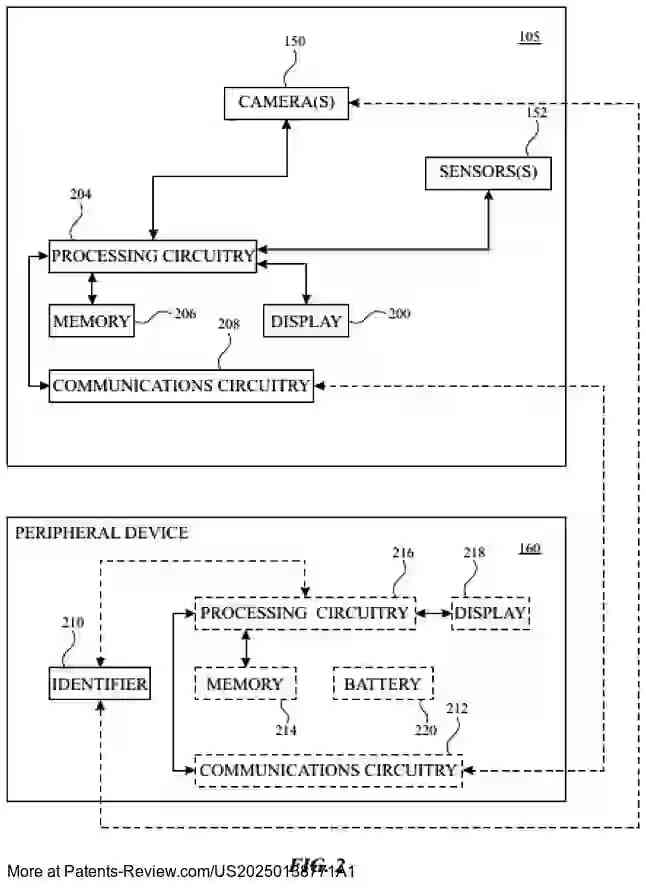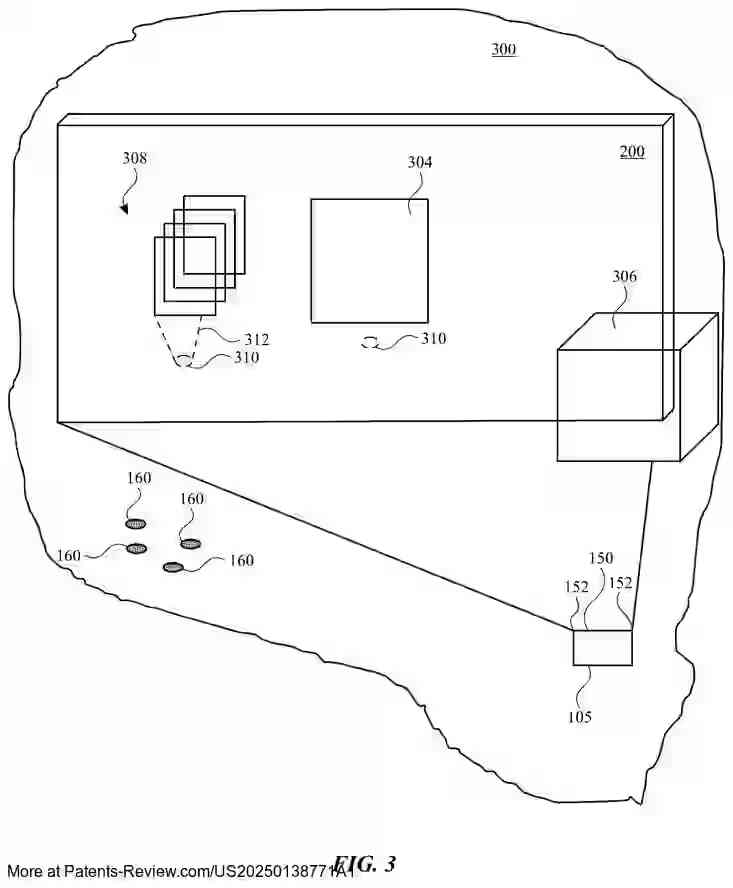PHYSICAL COMPANION DEVICES FOR USE WITH EXTENDED REALITY SYSTEMS
US20250138771
2025-05-01
Physics
G06F3/147
Inventors:
Applicant:
Drawings (4 of 13)




Smart overview of the Invention
The patent application discusses a system involving physical companion devices designed for use in extended reality (XR) environments. These devices allow users to interact with virtual content integrated into their physical surroundings. The companion device can be inactive, passive, or active, with varying levels of circuitry and processing capabilities. This system facilitates the manipulation and transportation of digital content within XR environments by associating it with the physical companion device.
Technical Context
The technology bridges the gap between virtual and physical worlds by enhancing physical environments with electronic information that appears integrated when viewed through augmented reality (AR) technology. However, this information does not persist in the physical environment without AR technology. The subject technology aims to provide a persistent association between virtual content and physical devices, even when XR components are not active.
System Description
The XR system can track a user's physical movements and adjust virtual objects accordingly, aligning with physical laws. It supports various electronic systems like head-mounted displays, projection-based systems, and handheld devices to enable interaction with XR environments. The companion device acts as a bridge to carry digital content across these environments, allowing users to access stored data at different times and locations.
Device Implementations
Companion devices can range from simple identifiers detectable by cameras to complex devices with processing capabilities. They store unique identifiers and can communicate information using wireless power or integrated processing circuitry. These devices allow users to transport and access digital items, such as photographs or documents, across multiple XR systems or devices.
System Architecture
The described system architecture includes various electronic devices like smartphones, tablets, and head-mounted displays that present XR environments. These devices are equipped with cameras and sensors to capture user input through multiple modalities, such as eye tracking and gesture recognition. The companion device interacts with these electronic components to facilitate seamless integration and management of virtual content in the physical world.